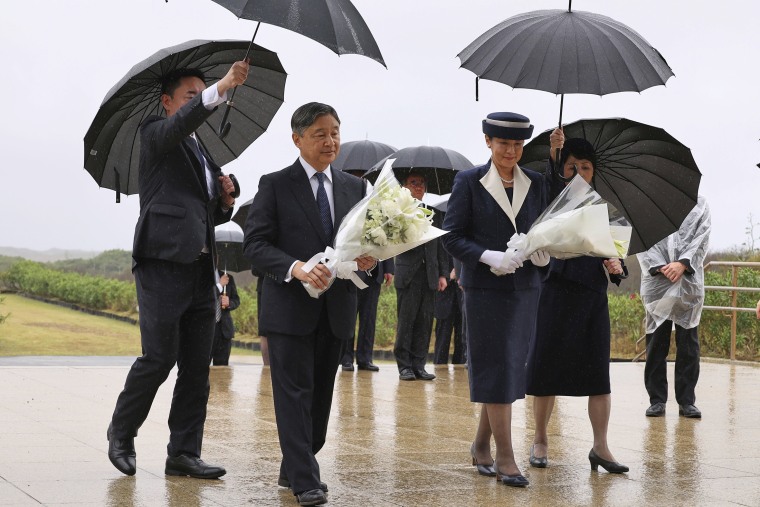Japanese emperor visits Iwo Jima to honor the dead in one of World War II’s fiercest battles
Japan’s Emperor Naruhito visited Iwo Jima on Monday and paid tribute to thousands of Japanese and Americans who died in one of World War II’s bloodiest battles.
Naruhito and his wife, Empress Masako, prayed at three memorial sites — one for the Japanese soldiers, another for the islanders and a third for both Japanese and American war dead.
The couple offered a bouquet of white flowers and poured water over a cenotaph from a ladle to console those who died under the heat while suffering from hunger and thirst. They were due to meet with representatives of bereaved families and descendants of former island residents.

The visit by the royal couple, both born after the war, is the first to Iwo Jima.
Naruhito, in his 65th birthday remarks in February, noted the 80th anniversary of the end of WWII and stressed the importance of remembering the wartime history and telling younger generations about the tragedy. Japan fought the war and invaded large areas of Asia in the name of his grandfather, Emperor Hirohito.
The battle of Iwo Jima lasted from Feb. 19 to March 26, 1945, as the United States tried to take control of a key strategic point to advance to mainland Japan.
Despite expectations by the U.S. they would overwhelm the Japanese within days, Japanese soldiers used underground tunnels and resisted for five weeks, in a part of war history that has inspired many novels and movies.
Nearly all of the more than 21,000 Japanese and nearly 7,000 U.S. troops were killed. More than half of the remains of the Japanese are still unaccounted for. All 1,100 residents of Iwo Jima except for 103 men drafted as military employees were forcibly evacuated to mainland Japan. Of the 103, 82 were killed in the fighting.

The emperor’s Iwo Jima visit comes 10 days after Japanese Prime Minister Shigeru Ishiba and Defense Minister Gen Nakatani joined U.S. Secretary of Defense Pete Hegseth in a memorial service marking the end of the battle.
Former residents and their descendants are allowed to visit the island for memorial events but not to live there.
Following a 23-year U.S. occupation, Iwo Jima was returned to Japan in 1968 as part of the Ogasawara island group, but is now home to only 380 service members of the Japan Maritime Self Defense Force. The island is also used for U.S. military aircraft landing exercises.



